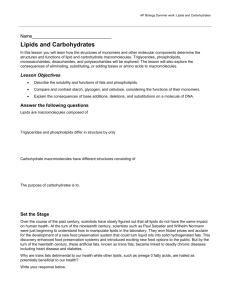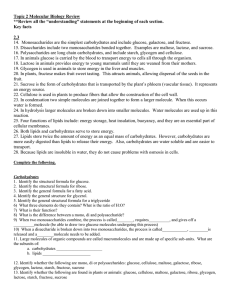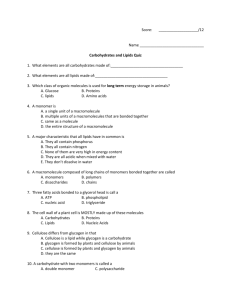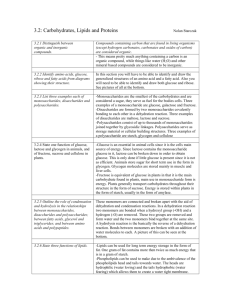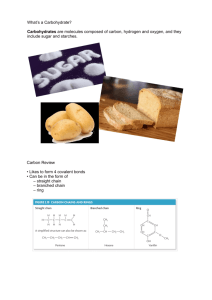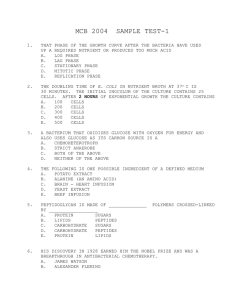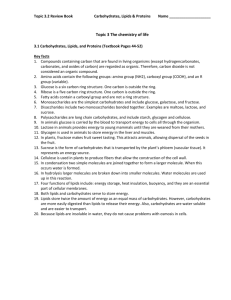Assessment 1- Distinguishing Classes of Macromolecules
advertisement
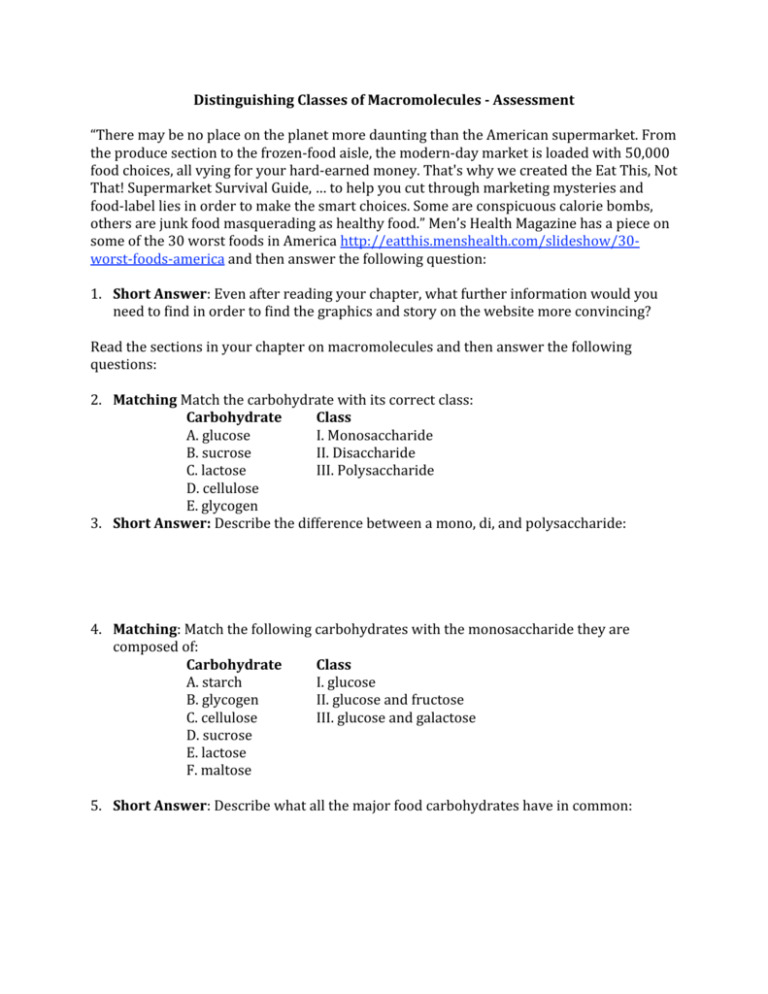
Distinguishing Classes of Macromolecules ­ Assessment “There may be no place on the planet more daunting than the American supermarket. From the produce section to the frozen‐food aisle, the modern‐day market is loaded with 50,000 food choices, all vying for your hard‐earned money. That's why we created the Eat This, Not That! Supermarket Survival Guide, … to help you cut through marketing mysteries and food‐label lies in order to make the smart choices. Some are conspicuous calorie bombs, others are junk food masquerading as healthy food.” Men’s Health Magazine has a piece on some of the 30 worst foods in America http://eatthis.menshealth.com/slideshow/30‐ worst‐foods‐america and then answer the following question: 1. Short Answer: Even after reading your chapter, what further information would you need to find in order to find the graphics and story on the website more convincing? Read the sections in your chapter on macromolecules and then answer the following questions: 2. Matching Match the carbohydrate with its correct class: Carbohydrate Class A. glucose I. Monosaccharide B. sucrose II. Disaccharide C. lactose III. Polysaccharide D. cellulose E. glycogen 3. Short Answer: Describe the difference between a mono, di, and polysaccharide: 4. Matching: Match the following carbohydrates with the monosaccharide they are composed of: Carbohydrate Class A. starch I. glucose B. glycogen II. glucose and fructose C. cellulose III. glucose and galactose D. sucrose E. lactose F. maltose 5. Short Answer: Describe what all the major food carbohydrates have in common: 6. Matching: Match the following carbohydrates with their functions: Carbohydrate Class A. glycogen I. energy storage in animals B. starch II. energy storage in plants C. cellulose III. structural support in plants D. glucose IV. structural support in animals E. sucrose V. cellular energy source F. fructose 7. Matching: Match the following lipids with t he molecules they are composed of: Lipid Class A. triglyceride I. glycerol and three fatty acids B. phospholipid II. glycerol, two fatty acids, and a phosphate group C. steroid III. four fused carbon‐rich rings with low amounts of oxygen atoms. 8. Matching: Match the following lipids with their function: Lipid Class A. cholesterol I. These lipids in our diet come from oils and fats, used for calories B. testosterone II. These lipids are the main component of all cell membranes C. triglyceride III. These lipids are responsible for stimulating male secondary sex characteristics. D. phospholipid IV. These lipids are found in the outer membane of animal cells, and also acts as a precursor for many steroid hormones in humans. 9. Matching: Match the polymer (long chain of covalently bonded subunits) with the subunit monomers that they are composed of: Polymer Monomer A. protein I. glucose B. glycogen II. amino acids C. fats III. fatty acids D. triglyderide E. cellulose F. sucrose Answer Key: 1. Depends on interest of students but they commonly ask about the difference between saturated and unsaturated fats, cholesterol, total calories required each day and allotment of calories to fats. 2. A, I; B,II; C,II; D,III, E,III 3. Monosaccharides are composed on only one ring of sugar, disaccharides are composed of two sugar rings, and polysaccharides are composed of many rings of sugars in a long chain. 4. A,I; B,I; C,I, D,II; E,III, F,I 5. All carbohydrates are composed of rings of sugars, usually with the formula C6H12O6. 6. A,I; B,II; C,III; D,V; E,II; F,II 7. A,I; B,II, C,III. 8. A,IV; B,III; C,I; D,IV 9. A,II; B,I; C,III; D,III; E,I; F,I


